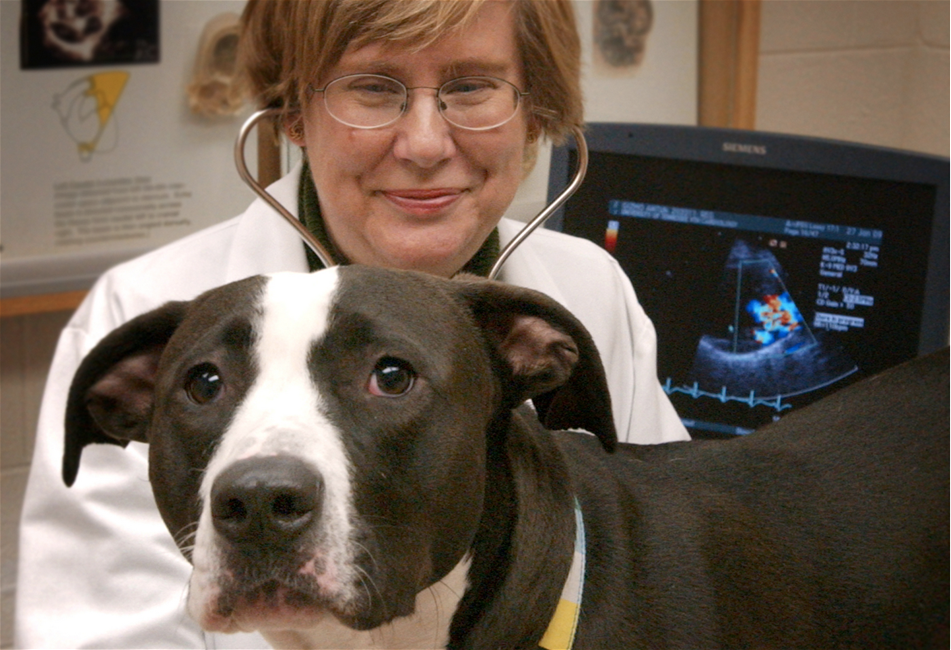What You Need to Find Out About Vet Solutions: A Review of Diagnostic Devices and Procedures
Veterinary services play a crucial function in keeping the health and wellness of family pets. Regular exams can expose concealed health and wellness worries beforehand. Various analysis tools and procedures, such as blood tests and imaging strategies, offer necessary insights right into an animal's well-being. Recognizing these techniques is essential for family pet proprietors. What details diagnostic procedures are most frequently made use of, and exactly how can they influence an animal's treatment plan?
Value of Routine Veterinary Examinations
While numerous animal owners might undervalue the importance of normal veterinary exams, these visits are crucial for maintaining a pet's overall health and wellness. Routine check outs to the vet permit early discovery of possible wellness problems before they rise into severe troubles. Routine check-ups commonly include vaccinations, which are vital for avoiding infectious conditions that could drastically affect a pet's wellness. Furthermore, these consultations offer a possibility for vets to analyze the pet's weight, dental wellness, and general problem, guaranteeing that the family pet is growing. Throughout these sees, pet owners can additionally obtain useful guidance on diet, exercise, and preventative treatment tailored to their details pet's demands.
Typical Diagnostic Procedures in Vet Medication
In vet medicine, exact medical diagnosis is crucial for effective therapy. Typical analysis treatments consist of blood screening techniques, advanced imaging modern technologies, and urinalysis, each playing a significant duty in determining health and wellness problems. Comprehending these techniques improves the capability to offer ideal care for pet individuals.
Blood Examining Methods
Blood testing methods function as essential analysis devices in vet medication, enabling veterinarians to assess the wellness of animals precisely. These methods include accumulating blood examples to examine numerous components, such as white and red blood cells, platelets, and biochemical markers. Common tests include full blood counts (CBC), which evaluate total health and discover infections, and biochemical panels, which evaluate organ function and metabolic standing. Additionally, serological examinations can identify specific diseases through antibody discovery. Blood testing is minimally intrusive and provides vital information that assists in diagnosing problems, keeping an eye on health standing, and reviewing actions to treatments. In general, these methods play an essential duty in ensuring suitable care for animals and animals alike.
Imaging Technologies Used
Diagnostic imaging modern technologies are vital devices in vet medicine, complementing blood testing techniques by offering aesthetic insights right into an animal's interior frameworks. Usual imaging modalities include X-rays, which are helpful for evaluating bone cracks and finding foreign things, and ultrasound, which permits for real-time visualization of soft tissues and body organs. Magnetic resonance imaging (MRI) offers comprehensive photos of complex physiological locations, specifically in neurological evaluations. Calculated tomography (CT) supplies cross-sectional images, boosting diagnostic accuracy for various conditions. Each of these innovations aids vets in diagnosing health problems, planning treatments, and keeping an eye on healing. By integrating imaging innovations, vet professionals can better evaluate a pet's health and wellness and make informed choices concerning their treatment.
Urinalysis and Diagnostics
Urinalysis acts as an essential diagnostic device in veterinary medication, giving beneficial insights into a pet's overall health and aiding in the discovery of different problems. This non-invasive treatment assesses pee samples to analyze kidney function, hydration status, and metabolic disorders. Typical parts checked out consist of particular gravity, pH levels, sugar, proteins, and the presence of blood or microorganisms. Unusual findings can indicate concerns such as urinary tract infections, diabetes mellitus, or kidney disease. To enhance analysis accuracy, urinalysis is typically carried out combined with other tests, such as blood job and imaging research studies. Early detection with urinalysis can bring about timely interventions, boosting the prognosis for numerous veterinary clients. It is an essential element of detailed vet care.
Understanding Blood Tests and Laboratory Analysis
Comprehending blood examinations and lab analysis is important in veterinary medication as it assists in identifying numerous health conditions in pets. Different kinds of blood tests provide necessary information concerning an animal's internal state, while translating laboratory results requires mindful consideration of countless variables. This section will explore the kinds of blood tests readily available and the relevance of their outcomes.
Kinds Of Blood Examinations
Blood examinations play an important role in veterinary medicine, giving necessary understandings right into an animal's health standing. Various sorts of blood tests are made use of, each offering various objectives. Full blood matters (CBC) assess general health and wellness and discover problems such as anemia or infection. Biochemical profiles assess organ feature by measuring electrolytes and enzymes, providing insights into metabolic wellness. Serological examinations identify specific antibodies or microorganisms, assisting in the medical diagnosis of infections or autoimmune diseases. Blood inputting warranties safe transfusions, while coagulation tests assess the blood's ability to embolisms, crucial for operations. These tests collectively enhance medical diagnosis, therapy preparation, and tracking of an animal's wellness, illustrating the importance of detailed lab analysis in veterinary treatment.

Translating Lab Results
A comprehensive evaluation of lab outcomes is crucial for exact medical diagnosis and therapy in vet medication. Interpreting laboratory results calls for an understanding of normal recommendation arrays and the value of inconsistencies. Blood tests can disclose various health indicators, such as organ feature, electrolyte balance, and the visibility of infections. Veterinarians should consider the whole scientific picture, consisting of the animal's history, health examination findings, and any type of signs and symptoms offered. Variations in outcomes may arise from variables such as age, breed, and underlying wellness problems. Lab results should not be seen in isolation however instead as component of a comprehensive diagnostic strategy. Precise interpretation permits for customized treatment plans and much better results for veterinary clients.
Imaging Techniques: X-rays, Ultrasounds, and Beyond
Imaging methods are necessary devices in veterinary medication, giving important understandings right into the wellness and wellness of pets. Amongst one of the most commonly used methods are X-rays and ultrasounds. X-rays are indispensable for visualizing bone frameworks, assisting vets identify fractures, tumors, or foreign things. This method is non-invasive and quick, making it optimal for urgent situations.Ultrasounds, on the various other hand, utilize acoustic waves to develop pictures of soft tissues and organs. This method is specifically useful for analyzing the heart, abdominal area, and reproductive body organs, permitting vets to examine conditions like fluid accumulation or body organ abnormalities.Beyond X-rays and ultrasounds, advanced imaging techniques such as computed tomography (CT) and magnetic resonance imaging (MRI) are progressively used in vet practice. These methods use detailed cross-sectional images, boosting the precision of medical diagnoses and treatment plans. CT Scans For Dogs. Overall, imaging methods play a crucial duty in ensuring effective veterinary treatment
The Function of Biopsies in Diagnosing Animal Wellness Issues
Accuracy in detecting health and wellness issues in pet dogs usually rests on the usage of biopsies, which provide clear-cut info concerning tissue abnormalities. A biopsy involves the removal of a small sample of cells for assessment under a microscope, permitting vets to identify different conditions, including infections, tumors, and inflammatory diseases. This analysis device is necessary for comparing malignant and benign growths, assisting therapy decisions, and evaluating the severity of a condition.Biopsies can be executed making use of different techniques, such as needle aspiration, incisional biopsies, or excisional biopsies, depending on the area and kind of cells entailed. The choice of technique may affect recuperation time and the amount of tissue accumulated. Eventually, the info amassed from a biopsy can lead to targeted therapies, boosting outcomes for animals facing serious wellness difficulties. Veterinarians stress the value of this procedure in achieving precise medical diagnoses and reliable treatment strategies.
Advanced Diagnostic Devices: Endoscopy and CT Scans

Advanced diagnostic tools, such as endoscopy and CT scans, play a vital function in contemporary veterinary medication, supplying non-invasive techniques to envision internal frameworks and Board Certified Veterinary Cardiologist detect different conditions in pet dogs. Endoscopy entails using a versatile tube geared up with a video camera, allowing veterinarians to take a look at the gastrointestinal tract and breathing system directly. This method can reveal problems such as lumps, international bodies, or inflammation, making it possible for targeted therapy plans.CT scans, on the various other hand, utilize sophisticated imaging innovation to develop in-depth cross-sectional photos of the body (CT Scans For Animals). This technique is specifically valuable for evaluating facility frameworks like the mind, back, and joints. By supplying high-resolution photos, CT scans assist veterinarians in recognizing issues that might not be evident with traditional radiography. With each other, these innovative tools boost analysis accuracy, enhance treatment outcomes, and eventually add to better general pet health monitoring

Translating Test Outcomes: What Animal Owners Ought To Know
Understanding examination outcomes can be a difficult task for animal owners, specifically after advanced treatments like endoscopy and CT scans have been executed. Translating these results calls for a grasp of clinical terminology and a clear understanding of what the findings indicate about the pet dog's wellness. Veterinarians usually provide explanations, but the intricacy of the results can still cause confusion.Pet owners must proactively take part in conversations with their vets, asking questions to make clear any type of uncertainties. It is necessary to recognize normal versus unusual results and the ramifications for the pet dog's treatment strategy. Furthermore, recognizing that some outcomes might call for more screening or surveillance can assist owners remain informed about their animal's health trip. Inevitably, a collective strategy between family pet proprietors and vet experts fosters far better health results and enhances the overall care experience for animals.
Frequently Asked Concerns
Just how Do I Pick the Right Veterinary Facility for My Family pet?
Selecting the appropriate vet facility includes looking into regional choices, reviewing credentials, checking out centers, and assessing staff interactions (CT Scans For Animals). Prioritizing referrals from relied on sources can aid assure the very best treatment and environment for a pet dog's health demands
What Should I Do if My Pet Rejects to visit the Veterinarian?
When a pet dog rejects to visit the veterinarian, it's recommended to continue to be calm, usage deals with or playthings to attract them, and take into consideration arranging a home check out if stress and anxiety persists. Patience and positive reinforcement are vital.
Are There Telehealth Options for Vet Solutions?
Telehealth options for vet services are increasingly readily available, enabling family pet owners to seek advice from vets from another location. These solutions make it possible for conversations concerning health and wellness concerns, advice on small ailments, and follow-ups without requiring to visit a center.
Just how Often Should My Pet Dog Have Dental Examinations?
The regularity of dental exams for pets normally relies on their age and breed. Generally, veterinarians suggest annual dental examinations, although some pets may require even more regular brows through to preserve suitable oral wellness.

What Are the Prices Associated With Veterinary Diagnostics?
The expenses linked with veterinary diagnostics can differ commonly, normally varying from fundamental tests like blood job to sophisticated imaging techniques. Factors influencing expenses consist of the clinic's location, devices made use of, and certain examinations required for every pet dog. Vet services play a crucial function in preserving the health of pet dogs. While several pet proprietors might take too lightly the importance of normal veterinary exams, these consultations are essential for maintaining a pet's overall health. Additionally, these consultations provide a possibility for veterinarians to evaluate the animal's weight, oral wellness, and total condition, ensuring that the family pet is prospering. Precision in diagnosing health problems in animals commonly hinges on the usage of biopsies, which supply conclusive details concerning tissue abnormalities. Additionally, recognizing that some results may require further screening or tracking can assist owners remain informed about their animal's health and wellness journey.